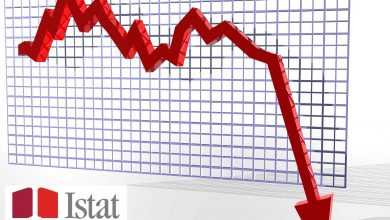
On 'Neurology' one study also reveals increases of 700% in 20 years in the USA. 'Neurology' due to lack of ability to negotiate the US health system
No not only anti-cancer or anti-hepatitis C. Even drugs against multiple sclerosis are now very expensive, at least in the United States, where a new study published in the journal 'Neurology' raises the alarm: in some cases the price of these medicines has increased by 700% in the last 20 years.
not only anti-cancer or anti-hepatitis C. Even drugs against multiple sclerosis are now very expensive, at least in the United States, where a new study published in the journal 'Neurology' raises the alarm: in some cases the price of these medicines has increased by 700% in the last 20 years.
The authors, experts at the Oregon State University College of Pharmacy, argue that there are no more sclerosis drugs available in the US with a list price of less than $50,000 a year, which costs 2 to 3 times more than in Canada. , Australia and the United Kingdom.
The group of therapies available for the treatment of this disease - the scholars add - has had an increase in price of 5-7 times higher than the normal inflation rate of the cost of overseas drugs. The results of this research therefore indicate that there is a systemic problem in the US pharmaceutical sector, which applies not only to drugs against multiple sclerosis.
g he huge, uncontrolled and rapid increases in drug prices, scientists say, could be linked to non-transparent policies, a dysfunctional market and the lack of a national health system that negotiates the cost of treatments more aggressively and directly with the pharmaceutical companies, a bit like in Italy.
he huge, uncontrolled and rapid increases in drug prices, scientists say, could be linked to non-transparent policies, a dysfunctional market and the lack of a national health system that negotiates the cost of treatments more aggressively and directly with the pharmaceutical companies, a bit like in Italy.
“The issue of astronomical drug costs, especially for innovative ones or for rare diseases, is increasingly common,” said Daniel Hartung, lead author of the study. "Many - he points out - believe that it is time to say enough". “We're used to thinking that any drug with $1 billion in sales turns into a blockbuster, but last year a hepatitis C drug sold 10 times as much, or $10 billion.
But this does not necessarily mean that the contribution of innovation is 10 times better”, the scholars point out. In the specific case of multiple sclerosis, the research analyzed first-generation drugs that hit the market in the 1990s at prices ranging from $8,000 to $10,000 a year. Then came competition from other medicines.
 But instead of falling, as the classic rules of economics would dictate, the price of the first therapies has risen: a treatment that originally cost $8,700 now costs $62,400 a year. An unexplained and "alarming" escalation, the researchers said. And most likely not attributable to an increase in production costs, nor to inflation, which only accounts for about 3-5%.
But instead of falling, as the classic rules of economics would dictate, the price of the first therapies has risen: a treatment that originally cost $8,700 now costs $62,400 a year. An unexplained and "alarming" escalation, the researchers said. And most likely not attributable to an increase in production costs, nor to inflation, which only accounts for about 3-5%.
"The simplest explanation is that pharmaceutical companies raise the prices of both new and old drugs, and our healthcare system places no limits on these increases," the researchers write in their report. “The time has come – they continue – to start a national debate on the unsustainable and suffocating costs of anti-sclerosis therapies”.
Barbara Di Chiara – April 27, 2015 – PharmaKronos
Related news: Two multiple sclerosis drugs





